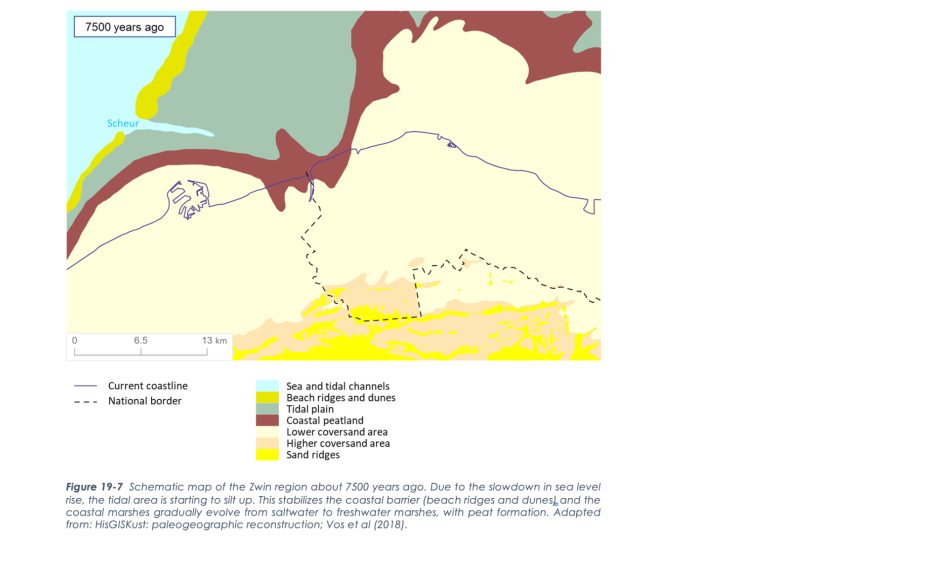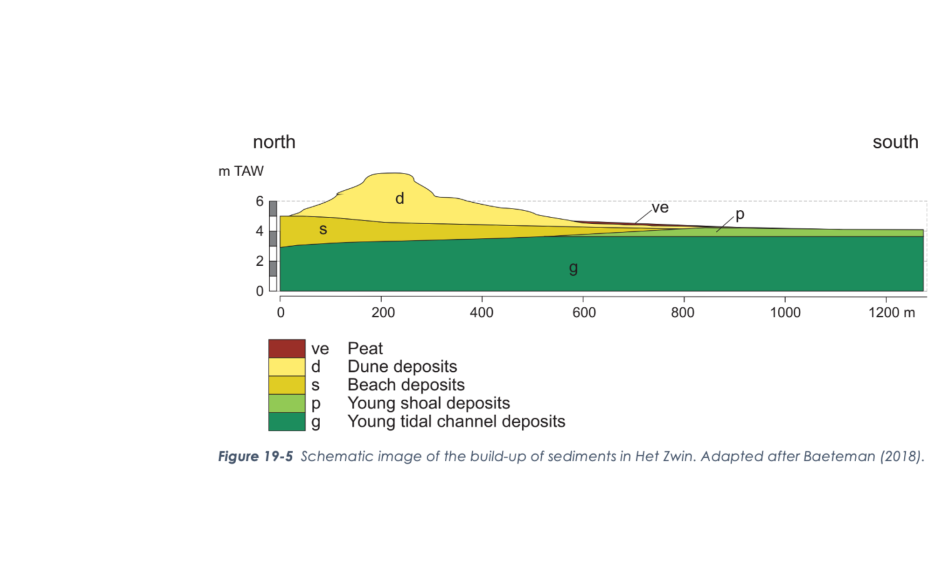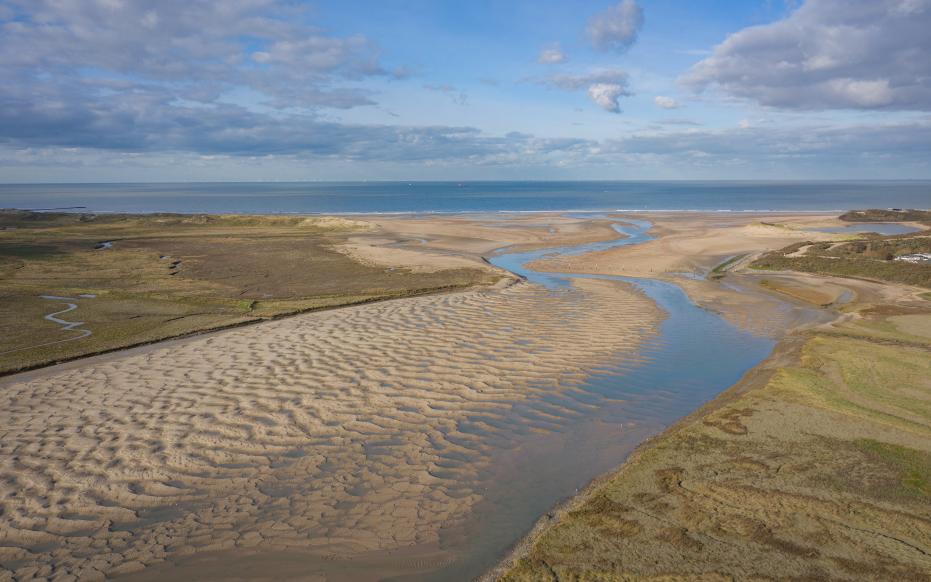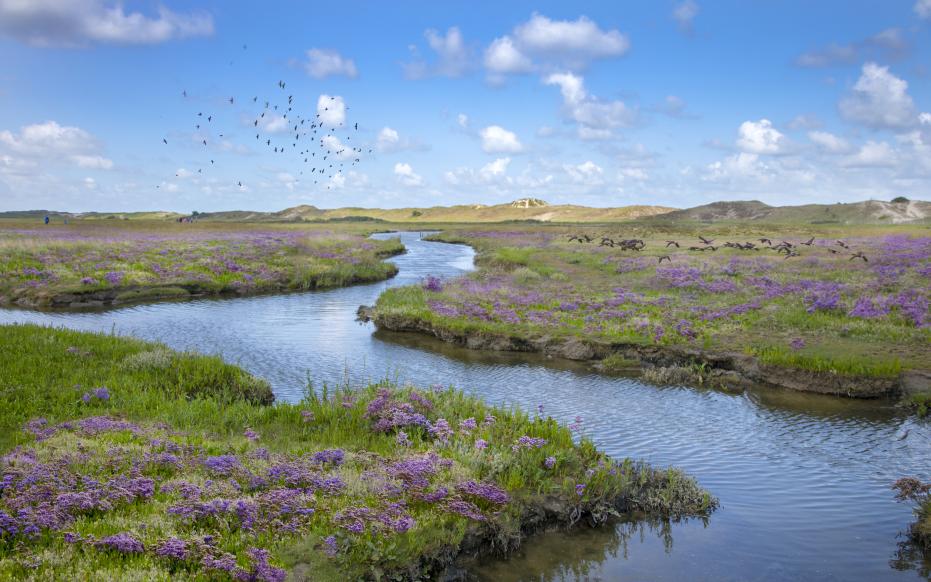Sea level rise, mudflats, and peat bogs
Rising sea levels did not gain influence in the Zwin Region until 7000 to 6000 years ago. The coastal belt was then 10-15 km off the present coast but stabilized and even shifted slightly seaward until 5500 years ago due to delayed sea level rise and supply of eroded sediment. Along higher edges, a peat swamp formed over the Pleistocene sandy landscape as fresh groundwater bubbled up. Until 2,800 years ago, the coastline remained stable and the peat swamp was able to expand further and further inland over the cover sand area and (locally) over the silted up salt marsh in parallel with slower sea level rise.




